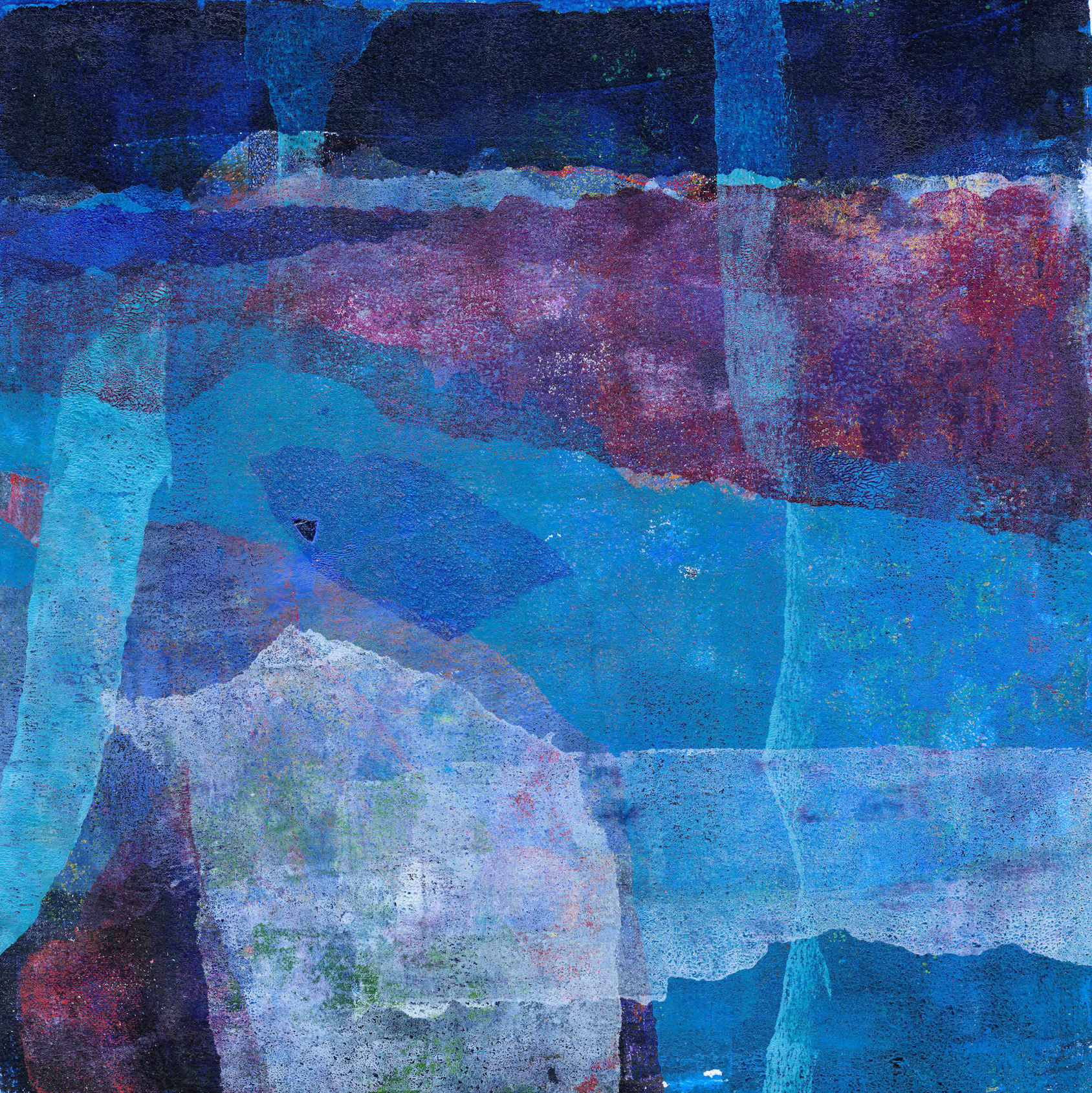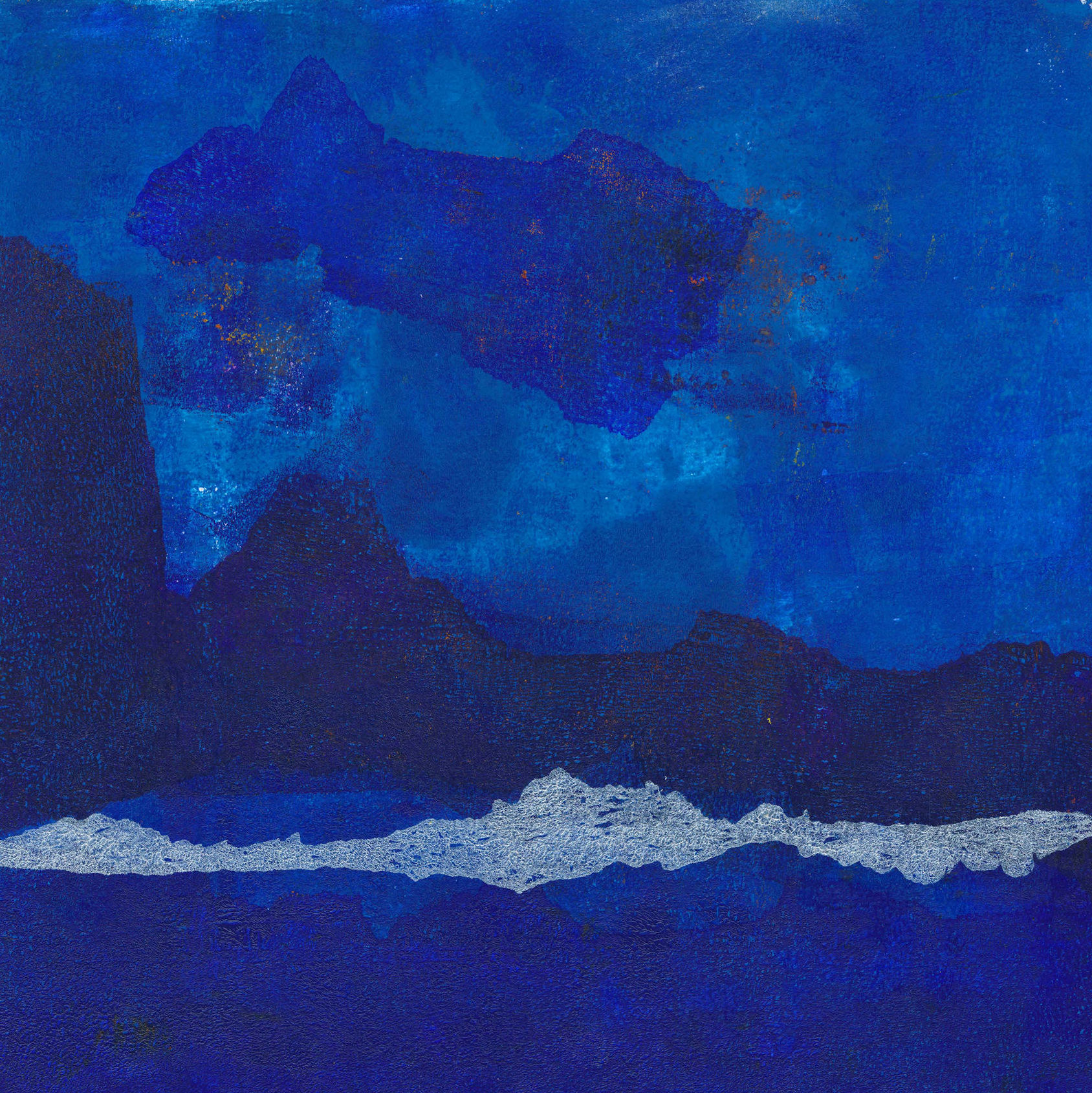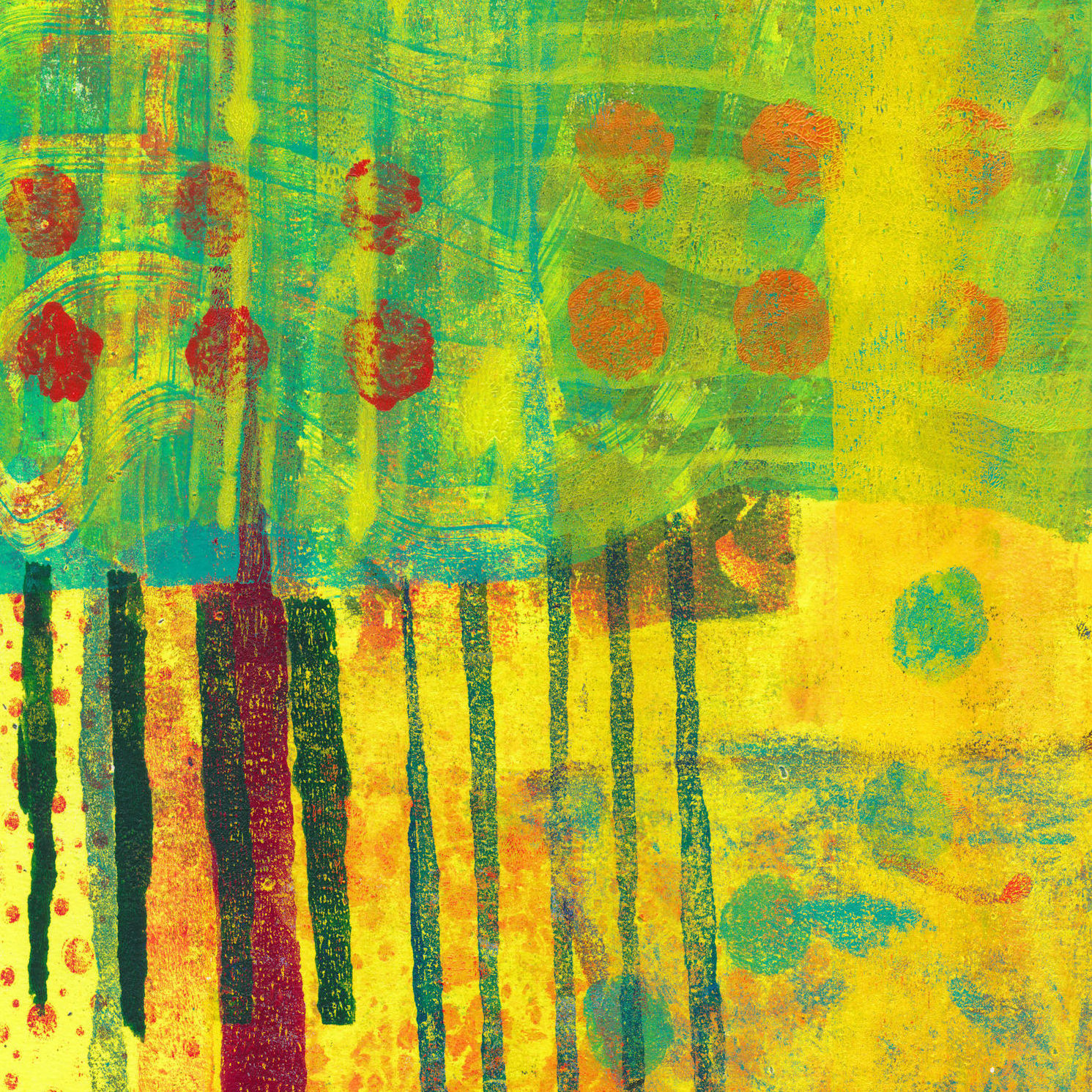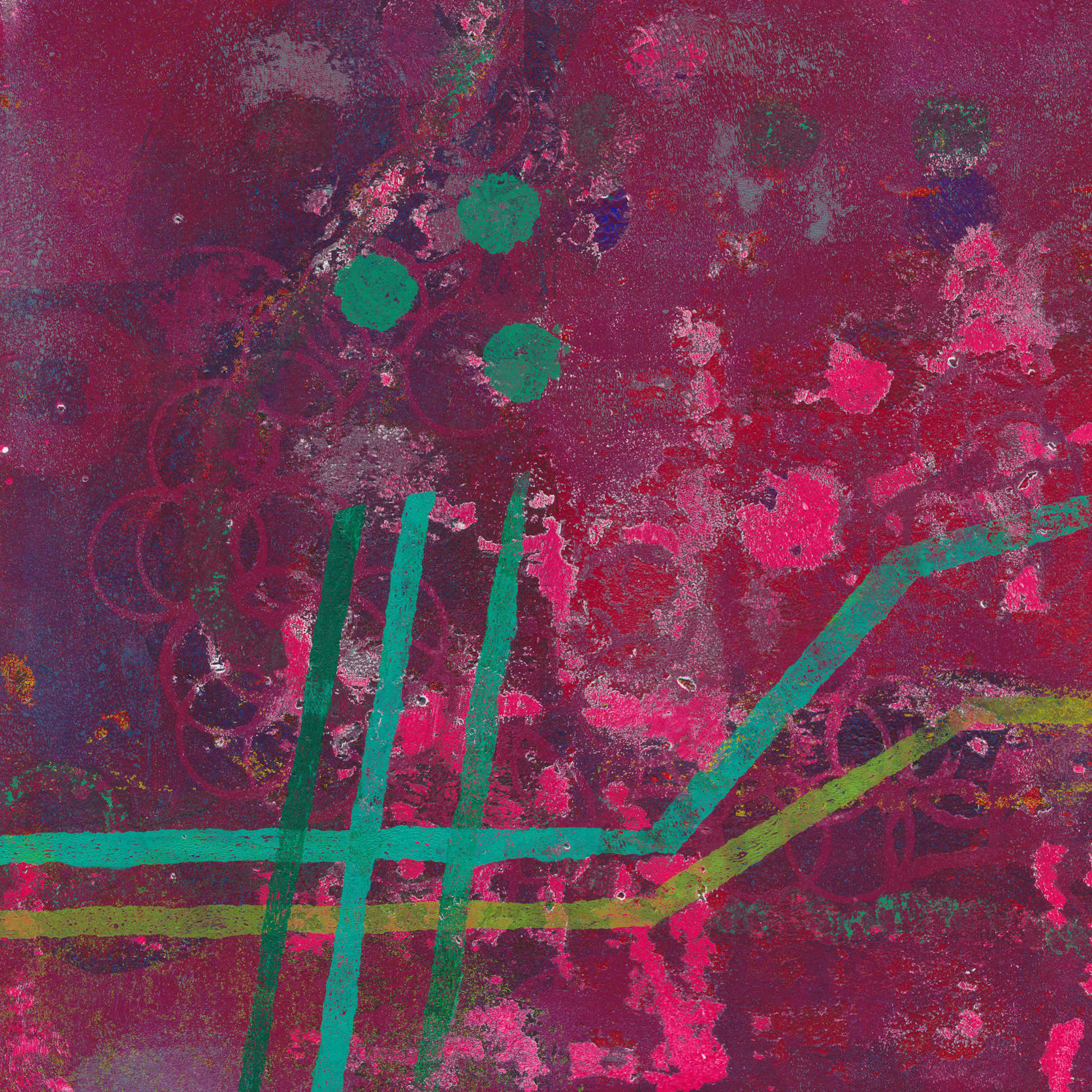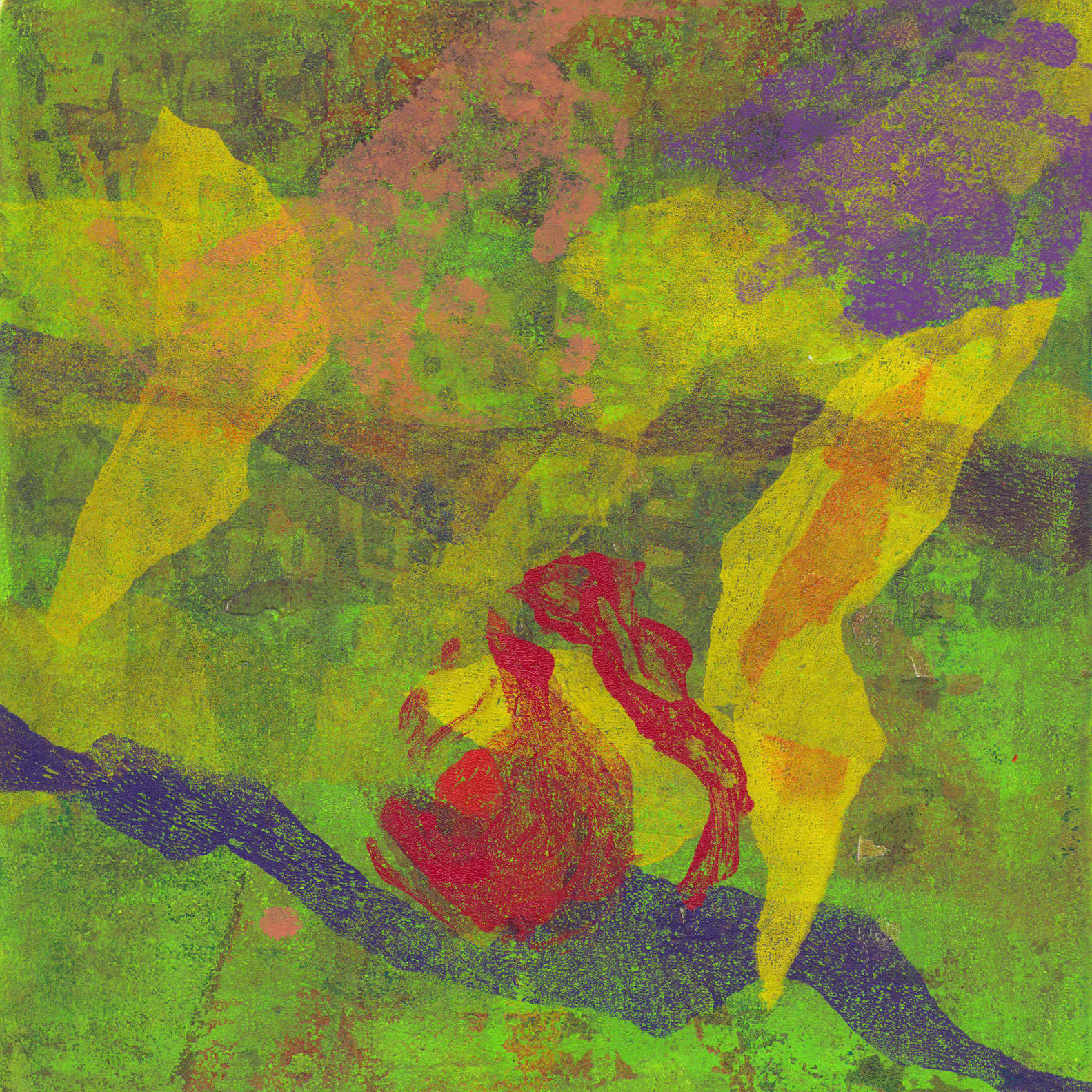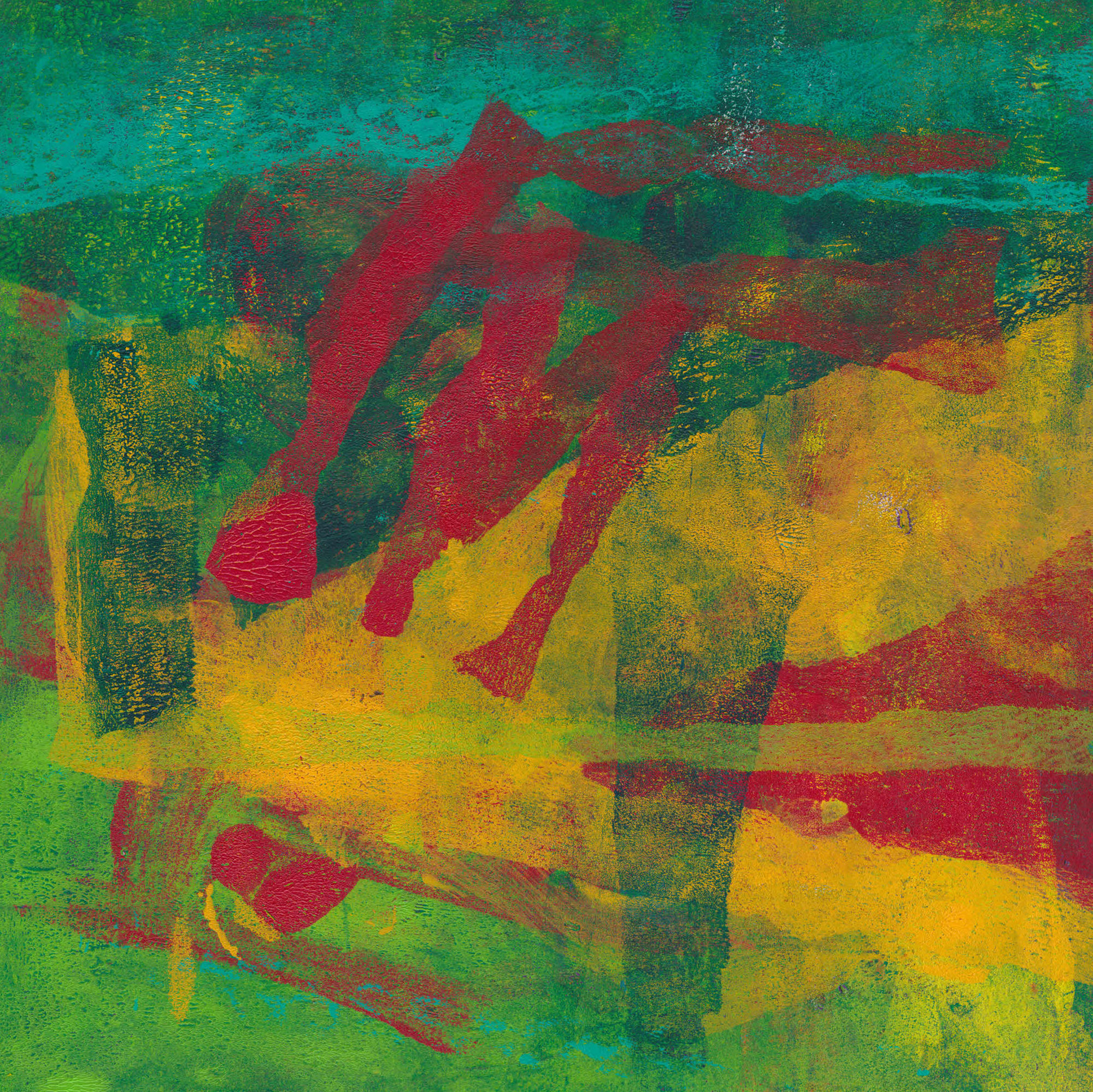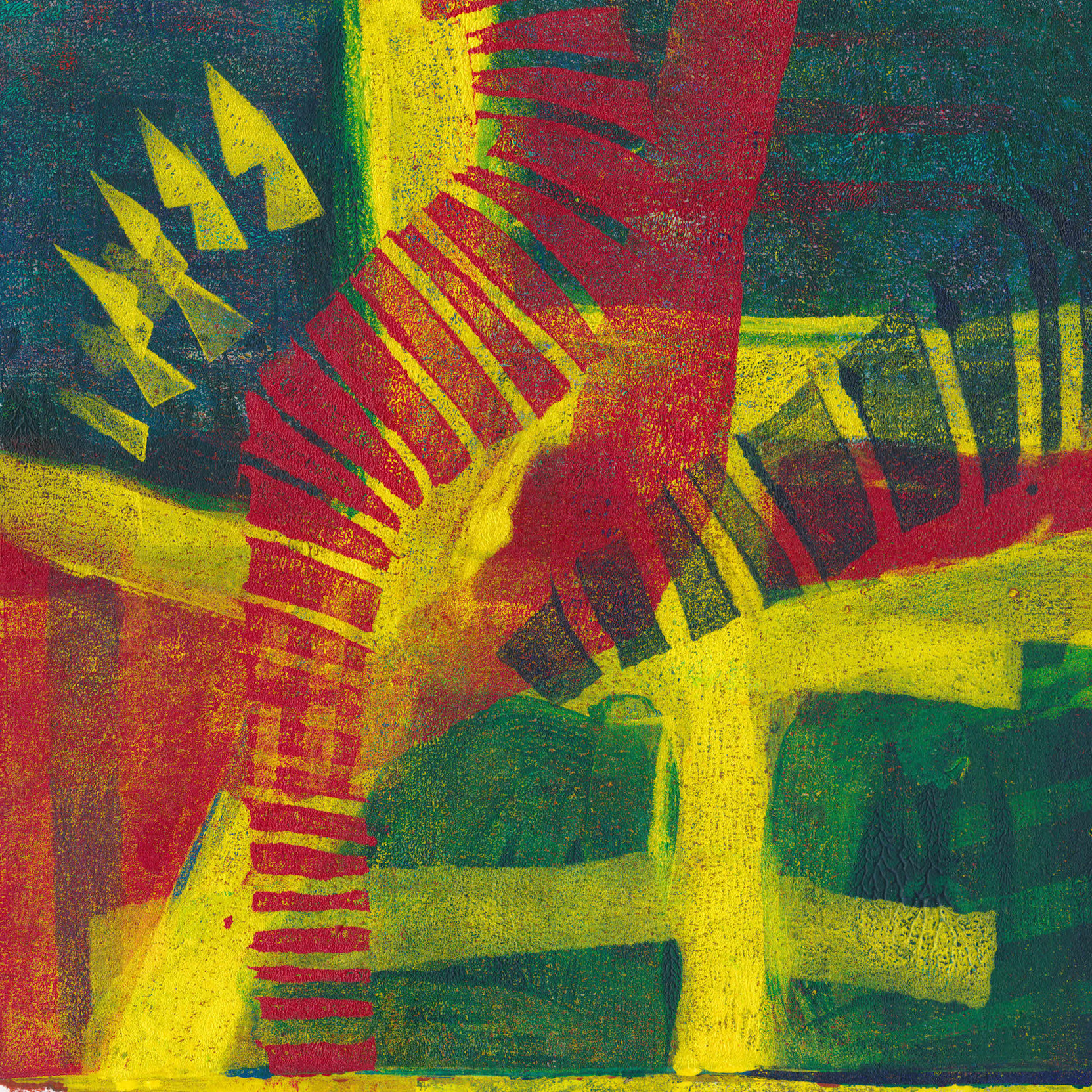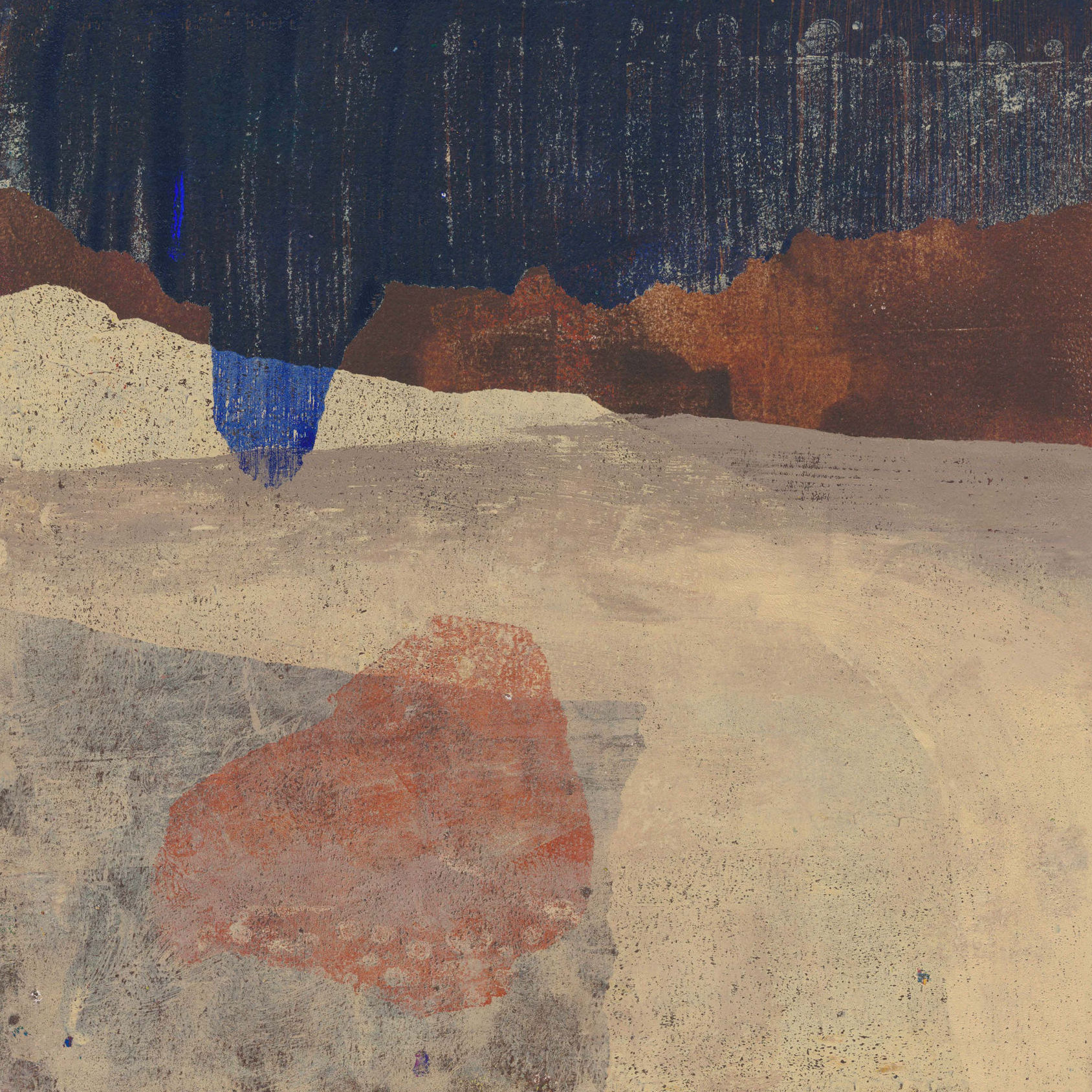
Annestown cove is one of a series of experiments in working with a limited palette. It is also one of several prints deriving inspiration from a cove beneath a tiny village called Annestown in Co. Waterford. (Bun Abha in Irish.) Some years ago I used photographs taken there as the basis for some digital prints and these images reinterpret the digital versions into acrylic paint on paper. I’ve used Bun Abha (sometimes I’ve misspelled it as Bun Rabha) and Annestown in the title of several prints in this Lockdown Series all drwing inspiration from this small stretch of the Waterford coastline. The Irish coastline and landscape influences numerous others.
The print was made by gel printing with acrylic paints on paper and is about 30 cm square. It is unmounted and unframed, although if you wish I can mount it on a cradled wooden panel, with black painted edges ready to hang on your wall.
During lockdown, I have made large series of similar colourful abstract monotype prints. They represent a new direction for my work, one I intend to continue to explore for a good while yet. I would especially like to revisit the Irish landscape in more prints. Even better would be to actually go back to the area. There are many stretches of the Waterford coastline I still want to explore.
What is a gel print?
Monotype prints in general are made by drawing or painting on a smooth, non-absorbent surface. This surface, sometimes called the matrix, was historically a copper etching plate. In contemporary work other materials are often used, such as acrylic sheet. The image on the matrix is then transferred onto a sheet of paper by pressing the two together. This usually requires a print press. Monotypes can also be created by inking an entire surface and then, using brushes or rags, removing ink to create light areas in a field of opaque colour. This is then pressed together with a sheet of paper to make the print.
The specific process I used for this print was gel printing (or Gelli but this is a trademark). The matrix in this case is a soft synthetic gel. I apply the paint to the gel sheet with rollers or brushes. The area to which the paint is applied can be controlled by masks and stencils. The rolled out paints can also be drawn into or textured in various ways. This process is repeated until I’m happy with the image.
Some of my prints made this way have over 20 separate full or partial layers. The nature of the process allows for both intense bright colours and subtle variations in colour as well as tangible physical texture.
